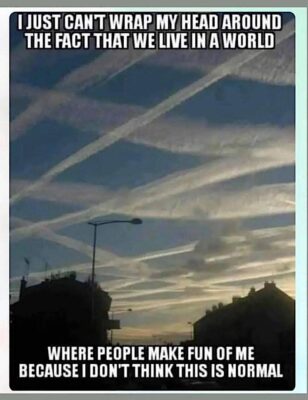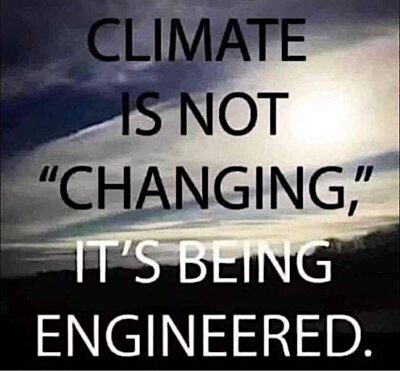GEOENGINEERING WEATHER / ‘CLIMATE CHANGE’

THE DIMMING [1:56:50] the most comprehensive climate engineering documentary
[Ed.: Here is what the UN proclaims is ‘Climate Change’. It’s all nonsense.]
Climate change refers to long-term shifts in temperatures and weather patterns. Such shifts can be natural, due to changes in the sun’s activity or large volcanic eruptions. But since the 1800s, human activities have been the main driver of climate change, primarily due to the burning of fossil fuels like coal, oil and gas.
Burning fossil fuels generates greenhouse gas emissions that act like a blanket wrapped around the Earth, trapping the sun’s heat and raising temperatures.
The main greenhouse gases that are causing climate change include carbon dioxide and methane. These come from using gasoline for driving a car or coal for heating a building, for example. Clearing land and cutting down forests can also release carbon dioxide. Agriculture, oil and gas operations are major sources of methane emissions. Energy, industry, transport, buildings, agriculture and land use are among the main sectors causing greenhouse gases.
Humans are responsible for global warming
Climate scientists have showed that humans are responsible for virtually all global heating over the last 200 years. Human activities like the ones mentioned above are causing greenhouse gases that are warming the world faster than at any time in at least the last two thousand years.
The average temperature of the Earth’s surface is now about 1.1°C warmer than it was in the late 1800s (before the industrial revolution) and warmer than at any time in the last 100,000 years. The last decade (2011-2020) was the warmest on record, and each of the last four decades has been warmer than any previous decade since 1850.
Many people think climate change mainly means warmer temperatures. But temperature rise is only the beginning of the story. Because the Earth is a system, where everything is connected, changes in one area can influence changes in all others.
The consequences of climate change now include, among others, intense droughts, water scarcity, severe fires, rising sea levels, flooding, melting polar ice, catastrophic storms and declining biodiversity.
People are experiencing climate change in diverse ways
Climate change can affect our health, ability to grow food, housing, safety and work. Some of us are already more vulnerable to climate impacts, such as people living in small island nations and other developing countries. Conditions like sea-level rise and saltwater intrusion have advanced to the point where whole communities have had to relocate, and protracted droughts are putting people at risk of famine. In the future, the number of people displaced by weather-related events is expected to rise.
Every increase in global warming matters
In a series of UN reports, thousands of scientists and government reviewers agreed that limiting global temperature rise to no more than 1.5°C would help us avoid the worst climate impacts and maintain a livable climate. Yet policies currently in place point to a 3°C temperature rise by the end of the century.
(etc., etc., etc.)
Climate Change Dane Wigington
Geoengineering Watch Global Alert News, December 9, 2023, # 435
The US Navy War College is promoting a seminar titled “Geoengineering the Earth’s Climate”, yet official sources and matrix media both try to marginalize any public discussion of this most dire issue. The ongoing COP 28 global climate conference is being seen as the smoke and mirrors facade that it is. A recent geoengineering patent promotes the spraying of highly toxic dimethylamine into our skies to enhance cloud formation. At ground level, “Thousands Of Tons Of Dead Fish Wash Ashore In Japan” shortly after the mass release of Fukushima waste water. Toxic skies, toxic seas, toxic everything, how much longer can we survive on a dying planet? Is there still time to turn the tide?
[Ed.:

